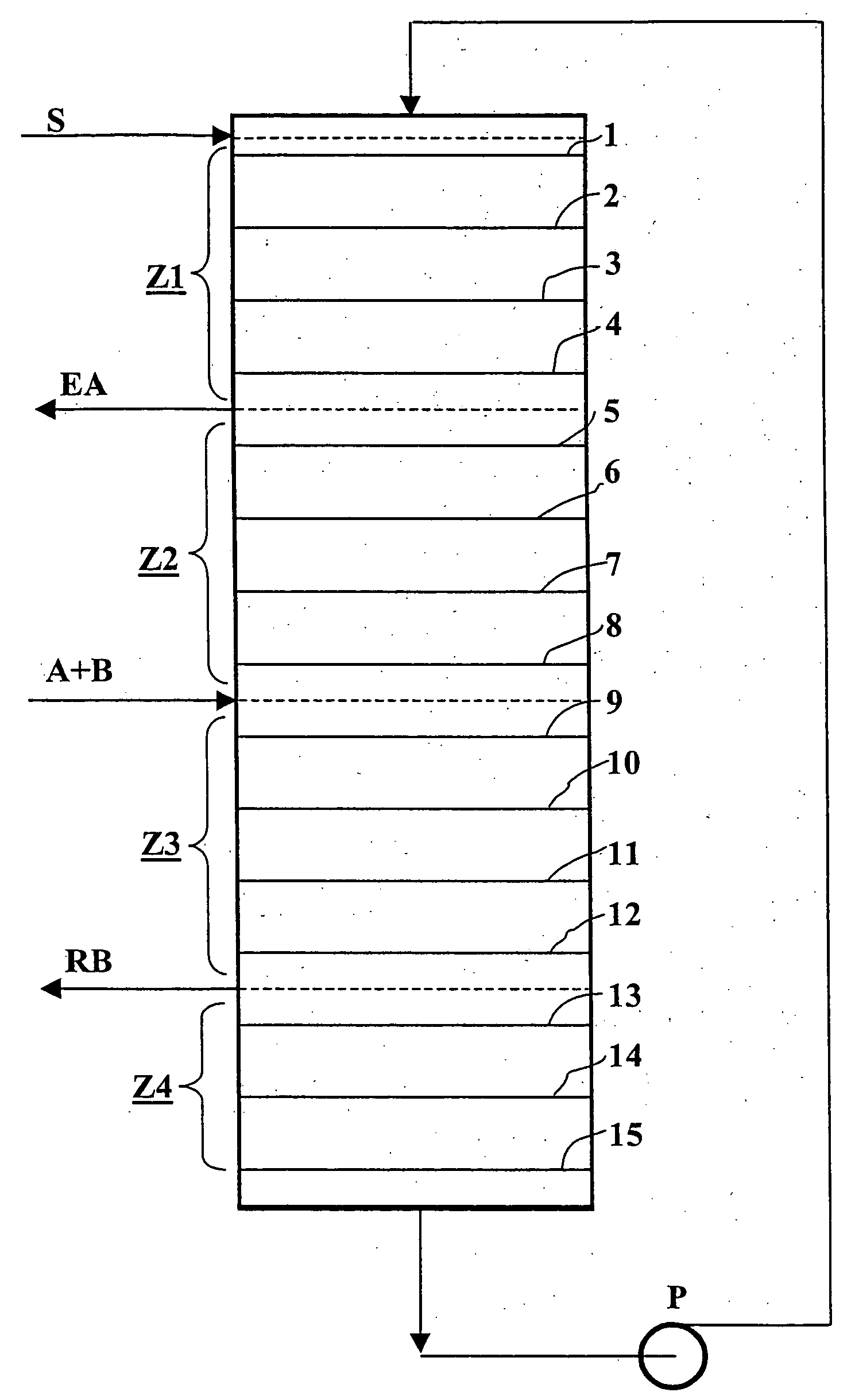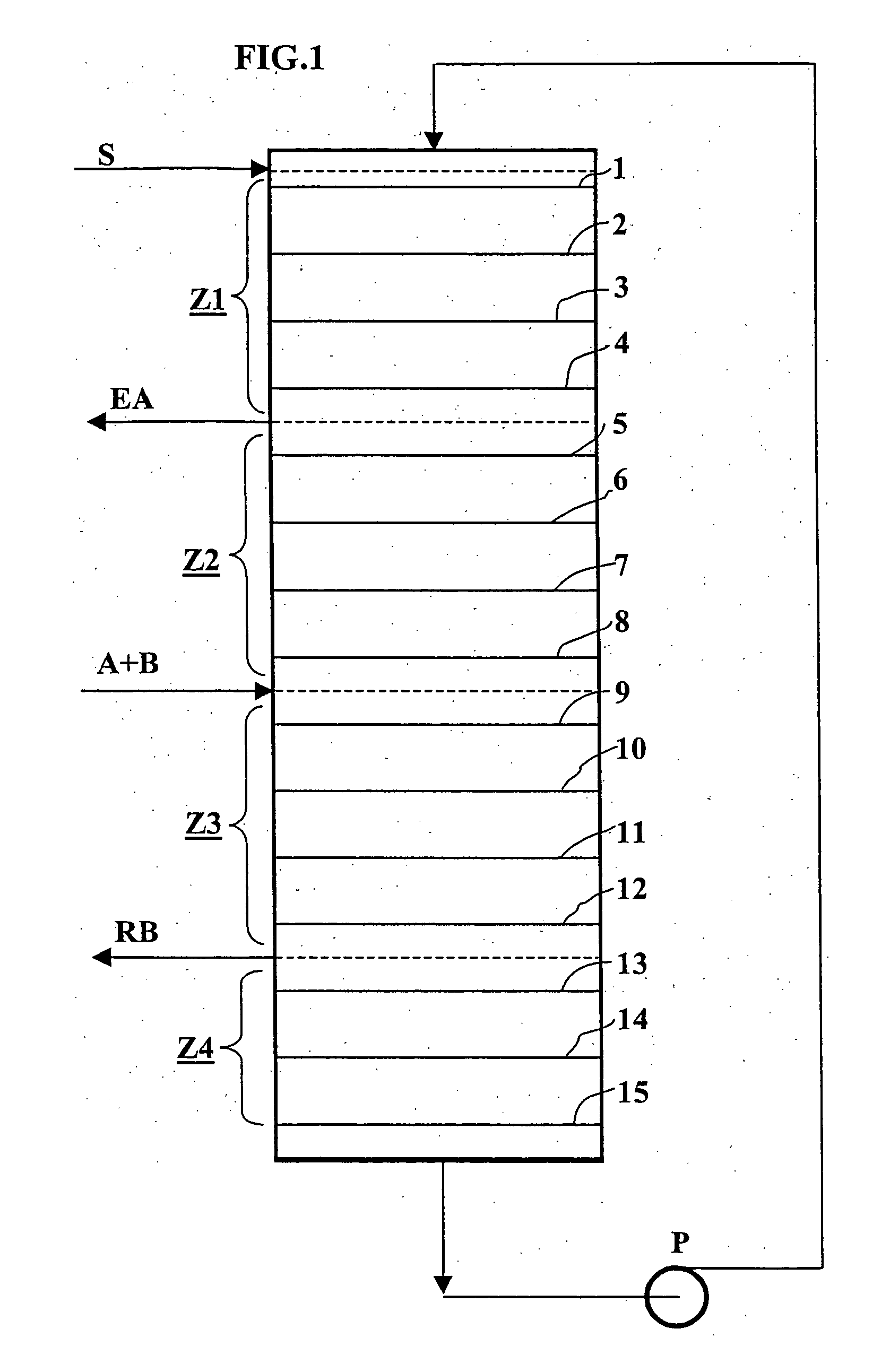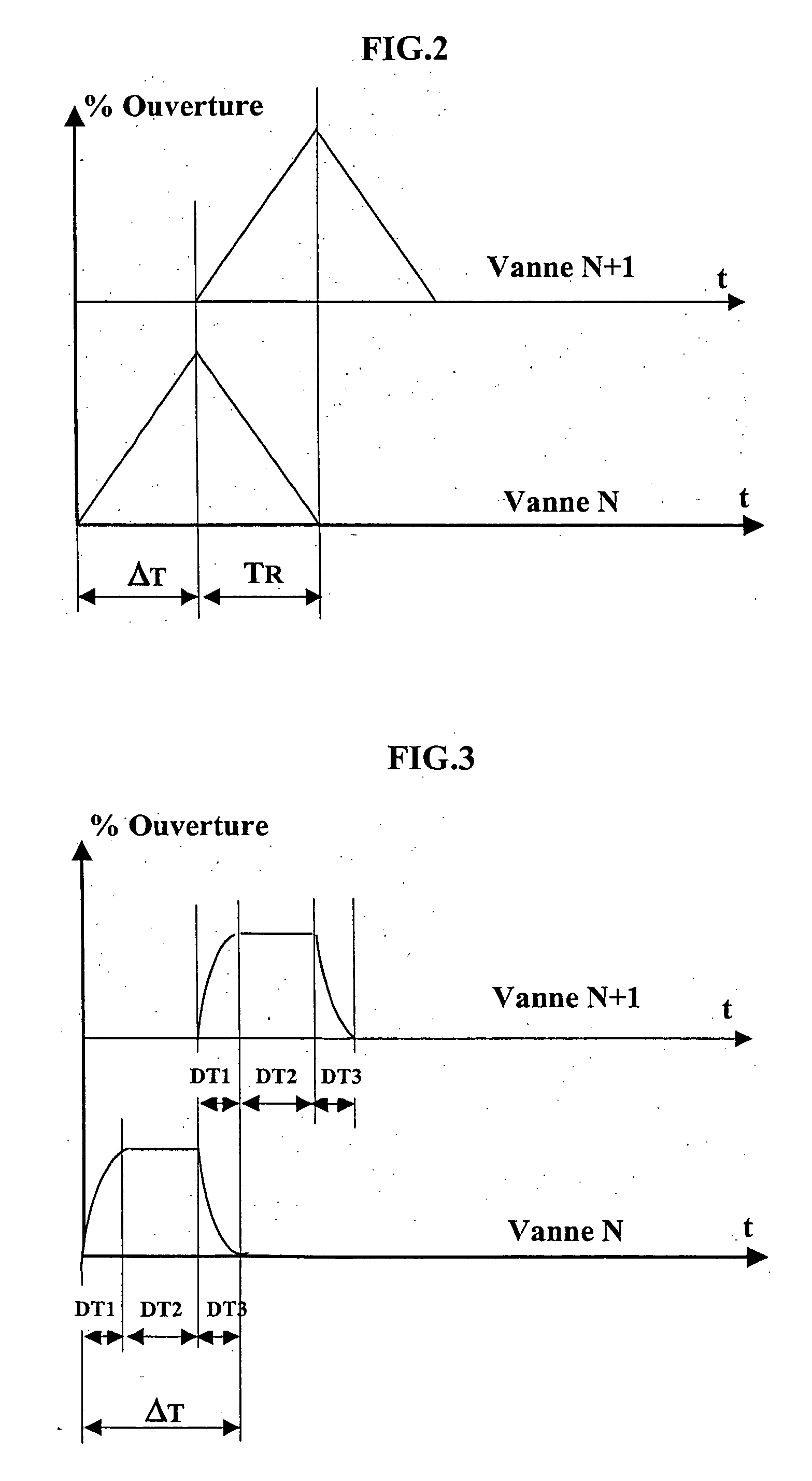Method of managing the valves of a simulated moving bed separation system
a technology of moving bed separation and management method, which is applied in the direction of water supply installation, separation process, water/sewage treatment by ion exchange, etc., can solve the problems of high-frequency management of valves controlling injection and draw-off, extreme delicate and high-frequency management of valves, and impose relatively expensive materials for the seat of these valves
- Summary
- Abstract
- Description
- Claims
- Application Information
AI Technical Summary
Benefits of technology
Problems solved by technology
Method used
Image
Examples
case 1
[0107] Case 1 corresponds to an opening law of the first order for which 99% of the valve opening is reached in 27.5 seconds, i.e. 36.7% of period .DELTA.T.
case 2
[0108] Case 2 corresponds to an opening law of the first order for which 99% of the valve opening is reached in 46 seconds, i.e. 61.3% of period .DELTA.T.
case 3
[0109] Case 3 corresponds to an opening law of the first order for which 99% of the valve opening is reached in 69 seconds, i.e. 92% of period .DELTA.T.
PUM
| Property | Measurement | Unit |
|---|---|---|
| opening time | aaaaa | aaaaa |
| overlap time | aaaaa | aaaaa |
| overlap time | aaaaa | aaaaa |
Abstract
Description
Claims
Application Information
 Login to View More
Login to View More - R&D
- Intellectual Property
- Life Sciences
- Materials
- Tech Scout
- Unparalleled Data Quality
- Higher Quality Content
- 60% Fewer Hallucinations
Browse by: Latest US Patents, China's latest patents, Technical Efficacy Thesaurus, Application Domain, Technology Topic, Popular Technical Reports.
© 2025 PatSnap. All rights reserved.Legal|Privacy policy|Modern Slavery Act Transparency Statement|Sitemap|About US| Contact US: help@patsnap.com



